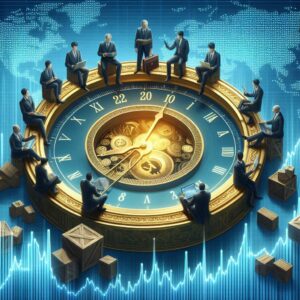Trading is the exchange of goods, services, or financial assets, where the ultimate goal is to meet needs or generate profit. In our increasingly interconnected world, trading forms the backbone of global economies and offers individuals unique opportunities to grow wealth and enhance financial literacy. It is not just an economic activity; it’s a dynamic process that reflects human ingenuity and adaptability.
Modern trading spans diverse markets, from financial instruments like stocks and bonds to tangible commodities such as oil and gold, and even emerging digital assets like cryptocurrencies. Understanding the principles and mechanisms of trading has never been more critical, as it equips individuals and businesses to navigate a complex global landscape effectively.
What is the Meaning of Trading?
At its essence, trading is about exchange—whether of goods, services, or financial instruments. It dates back to the earliest human societies, which relied on barter systems to trade items of perceived equal value. Over time, the invention of currency transformed trading into a sophisticated practice, laying the groundwork for today’s interconnected global markets.
Now, trading encompasses much more than tangible goods. It includes stocks, foreign currencies, derivatives, and digital currencies. This evolution highlights humanity’s continuous drive to innovate and create systems that optimize resource distribution. Modern trading is a testament to the ever-evolving nature of commerce and finance.

Key Types of Trading
Financial Market Trading
Trading in financial markets involves the exchange of stocks, forex, and bonds. Stocks grant ownership in companies, while forex is centered on currency trading, and bonds represent loans to entities like corporations or governments. Participants range from individual investors to large institutional players like banks and hedge funds. This ecosystem functions as a cornerstone of economic activity and growth.
Commodity Trading
Commodity trading deals with raw materials like gold, crude oil, and agricultural products. These goods are essential for industries and everyday life, making their trade a critical part of global economies. Prices often fluctuate due to geopolitical events, weather patterns, or shifts in supply and demand, creating both opportunities and challenges for traders.
Cryptocurrency Trading
Cryptocurrency trading involves digital assets like Bitcoin and Ethereum, built on blockchain technology. Unlike traditional markets, this realm operates 24/7, offering high liquidity but also significant volatility. While the potential for returns can be immense, navigating regulatory uncertainties and technological risks requires a strategic and informed approach.
How Does Trading Work?
The mechanics of trading revolve around supply and demand. Buyers and sellers interact to determine the price of an asset, with traders seeking to profit from these price movements. Success often hinges on buying low and selling high or capitalizing on market inefficiencies.
Trading platforms and tools have revolutionized this process, offering users advanced analytics, real-time data, and seamless execution of trades. Brokers and exchanges act as intermediaries, facilitating transactions and ensuring market stability. Whether through manual analysis or algorithmic strategies, trading requires a blend of knowledge and technology.
Benefits of Trading
Trading offers a pathway to financial growth and independence. By participating in markets, individuals can diversify their income sources, reducing reliance on traditional jobs or single revenue streams. Moreover, trading sharpens critical skills like risk management, analytical thinking, and decision-making, which have applications beyond finance.
For many, trading is also a tool for self-empowerment. It allows people to take control of their financial futures, turning market knowledge into tangible results. While the journey demands effort and discipline, the rewards can be transformative.
Risks and Challenges in Trading

Despite its allure, trading comes with inherent risks. Market volatility can lead to significant losses, particularly for those who lack experience or emotional control. Fear and greed often drive impulsive decisions, which can derail even the most promising strategies.
External factors, such as economic crises or geopolitical tensions, add layers of unpredictability. Traders must remain vigilant, employing risk management techniques like stop-loss orders and portfolio diversification to minimize exposure. Trading is not without its hurdles, but preparedness can make the journey smoother.
Tools and Strategies for Successful Trading
Effective trading hinges on the right tools and strategies. Fundamental analysis involves studying economic indicators and corporate health, while technical analysis focuses on price patterns and market trends. Staying updated through news and research is equally crucial.
Popular strategies include day trading for short-term gains, swing trading to capture intermediate trends, and long-term investing for gradual wealth building. Success requires patience, adaptability, and a clear understanding of one’s risk tolerance.
Who Can Become a Trader?
Trading is accessible to anyone willing to learn and apply themselves. Key traits for success include analytical thinking, resilience, and the ability to manage emotions under pressure. Educational resources like online courses, webinars, and mentorship programs provide a solid starting point for beginners.
Personality also plays a role—successful traders often exhibit patience, curiosity, and a willingness to embrace continuous learning. With dedication, anyone can develop the skills needed to navigate the trading landscape effectively.


